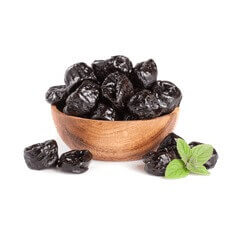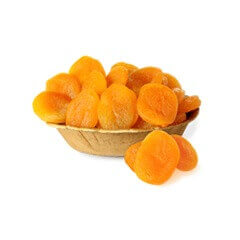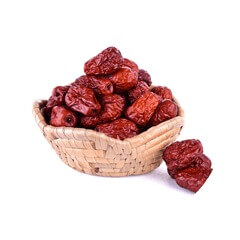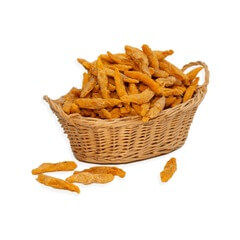How to Cook Basmati Rice: Tips and Tricks for Perfect Grains
Discover how to create the ideal fluffy Basmati rice every time. Basmati Rice is a flavourful, long-grain Himalayan rice that is ideal for complimenting a wide range of cuisines in various cultures. This is the simplest method to make it in a pot, no Instant Pot or rice cooker required, with just a few basic steps and only 20 minutes required. As someone who grew up practically devouring rice, I’m constantly surprised when my non-desi friends fail to cook a really nice bowl of rice. That was one of the first which everyone knows how to prepare rice. In any respect, basmati rice is unquestionably the most popular grain in many families. You may serve it simple, sweetened with saffron or coconut milk, or savory with cumin seeds to go with curry. It’s also the foundation for various meals like biryani and pulao. After cooking basmati rice, you’ll notice that it has a nutty scent and a light and fluffy texture. When it absorbs water, the grain expands and lengthens dramatically, making it the ideal rice for capturing flavor.

History
The term Basmati is taken from its Hindi equivalent, which translates as Fragrant. Basmati rice has been farmed for generations on the Indian subcontinent, according to history. The first mention of Basmati Rice in historical texts was in 1766. Through cultural interchange, Indian traders introduced Basmati Rice to the Middle East, and it has since become an essential element of Arab, Persian, and other cuisines. India, Pakistan, and Bangladesh are Asia’s only producers of Basmati rice. While several countries grow basmati rice, it was first developed and grown in India and Pakistan. India contributes to almost two-thirds of the world’s supply. origin is the strong relationship to basmati rice and its identity as a side for your favorite curry meal.
Specialty
According to a study, Basmati Rice contains traces of the chemical molecule 2-acetyl-1-pyrroline, giving the rice a pandan-like flavor and aroma. When compared to other rice kinds, Basmati has 0.09 ppm or 12 times less of this chemical component, which gives it its distinct spicy flavor and smell. The natural aroma inherent in Basmati may also be found in cheese, cereals, and fruits. This flavoring compound has been permitted by the United States and the United Kingdom, and bakers in both countries use it to aromatize their goods.
Cooking Techniques of Basmati Rice
Burning rice, crisp stale grains, or plain “good” rice are all possibilities. The following are some advantages of utilizing this recipe:
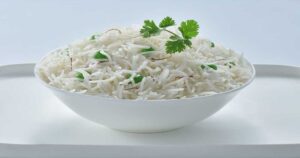
- Get the ideal rice-to-water ratio. This is perhaps the most difficult aspect to get properly because it varies by brand, place of origin, and grain type. The most essential thing you can do is follow the directions on the package to ensure you’re using the correct quantity. This also makes scaling the recipe simple.
- You could make this in a saucepan or pot without having to use a rice cooker or an Instant Pot.
- Use simply water and rice, or enhance it with butter, salt, bay leaves, saffron, lemons, and other seasonings.
- You’ll leave with a better grasp of the strategies for making fluffy, airy basmati rice every time in the future.
Why Choose Basmati Rice
Basmati rice is a fragrant, long-grain rice that originated in the Indian subcontinent. Although the type is now cultivated domestically in various nations, India still accounts for over 70% of Basmati rice production. This style of rice is popular all over the world and goes well with curries like Butter Chicken and Saag Paneer, as well as rice-based desserts like Rice Kheer.
Important Tips
This dish requires only basmati rice and tap water. You’ll need aged, long-grain white basmati rice. Adnoor Basmati Rice is my absolute favorite brand. It’s available in the online store and you can get it quickly. Most aged, long-grain basmati rice cultivated in the Himalayas need more water than other forms of long-grain rice or even basmati rice grown elsewhere. Use just about enough water to make light, fluffy rice that retains its shape but squishes readily between your fingers. For added taste, add a bit of salt, bay leaves, and/or bloomed saffron water to your rice.

How to Cook Fluffy Basmati Rice
To begin, wash the rice. This is necessary, every time, washing the rice eliminates extra starches, yielding flawlessly fluffy rice with distinct grains. Rinse the rice in a fine mesh strainer, or place it in a big dish and cover it with cold water. Swish it about with your hands, gently massaging the grains together with your fingertips. The water will be a muddy white color. Rinse and drain the rice many times more until the water runs clean. Drain it completely to avoid mushy rice caused by extra water. You may soak your rice for a maximum of 30 minutes if desired. The rice will be softer, but the change in texture isn’t significant enough to warrant the extra time if you’re in a hurry. These are the four simple steps to cook perfect fluffy rice.
- Begin by heating the rice and water in a saucepan over medium to high heat.
- Let the water come to a rolling boil. After it reaches a boil, reduce the heat to low and cover the saucepan with a lid. Let it boil, undisturbed. Stirring is not permitted. If you want to add salt or a bay leaf before covering the pot, do it now.
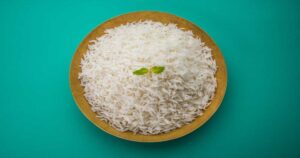
- Cook the rice for 8-10 minutes. The secret of fluffy rice is to cover it with a lid to create steam. Therefore, for the time being, leave it alone. When I do other things in the kitchen, I listen for the water to bubble in the pot. Turn off the burner when it sounds dry and the water has been completely absorbed. Let the rice remain for yet another 5 minutes to finish steaming.
- Take off the lid. With a fork, fluff the rice. Cover with a lid and set aside until ready to serve.
Visit Adnoor.ca to purchase the best quality Basmati Rice.




